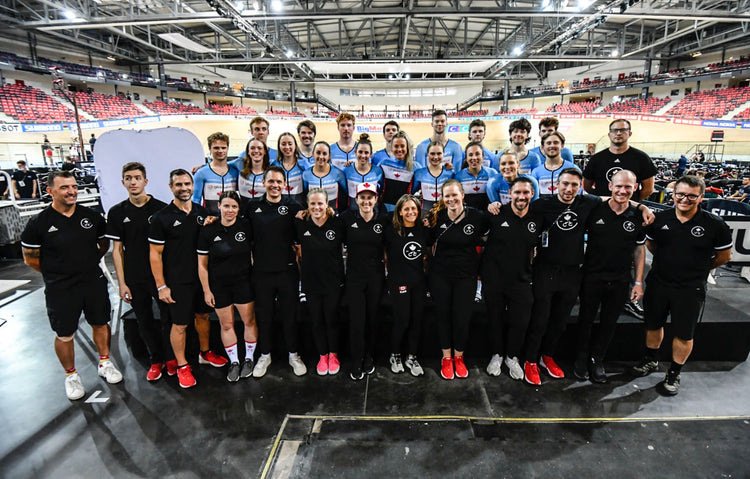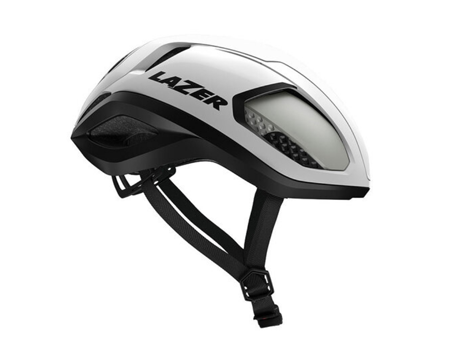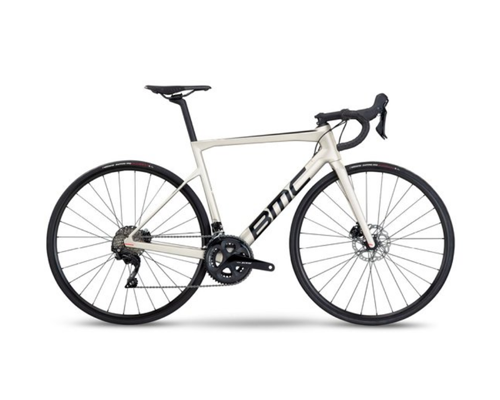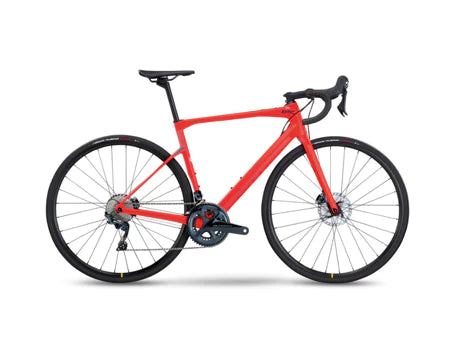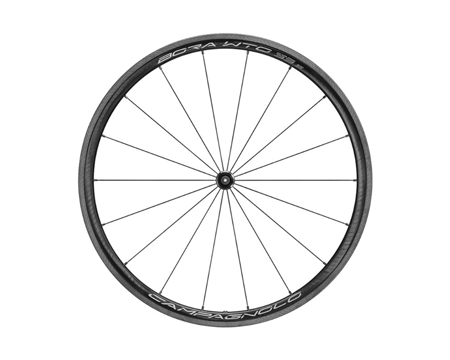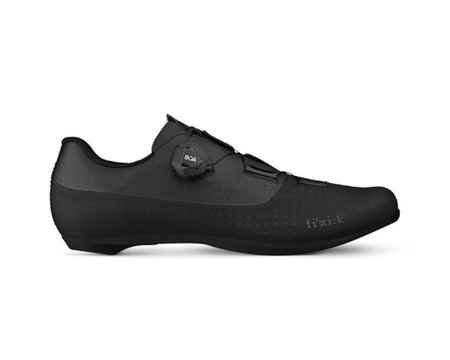Surely if you ask any lawyer, they will say their job is nothing like the show Suits. A doctor would say their work is nothing like House, a police officer would never admit their work is like Brooklyn 99. The same goes for my past career. Sure, I sat in the back of the team car, ran to a rider with a flat. I pulled riders out of pileups and worked on bikes late at night under a headlamp. These moments were plentiful but not the real job. The real job was packing bikes and fighting airports. I could honestly say it occupied 25% of all worked hours. Packing bikes, battling airports, and unpacking bikes.
Track Bikes and Velodromes
In any given year I would attend 5-7 track races and 4-6 road races, on average of course. For a track race we would have 15-20 riders. One track bike each, one road bike each. Some riders would have three track bikes if they were racing the omnium or Madison, and we would always bring a couple of key spare frames. Calgary’s own Allison Beverage crashed on average of every single race we went to. I always had a spare for her.
This adds up to about 40 bicycles. They all get packed, taken to the airport, flown, and then unpacked. On the way home, the same thing happens. With a rough calculation I believe I would pack 600 bikes per year and unpack around 400. I did this for 11 years. Take some slow years and covid into account. I’m quite confident that I have packed over 5500 racing bikes. Reassembling them around 4500 times. Riders often take their road bikes home after a race and deal with that themselves of course. This explains the lower assembly figure.
The Tsunami
I had for many years boxes that could take two frames or 8 wheels. Dividing those 40 bikes up amongst frames and wheels often lead to 25-30 bike boxes. Anyone who has flown with a single bike probably understands the extra hassle of this in the airport. The bigger cab, the oversize luggage drop-off, getting it out and down an elevator at your destination, into a shuttle or uber. Unpacking at your hotel. A track cycling team of 15 riders has 10 support staff. So, 25 people rock up to the airport with a bike box each. Plus, the extra boxes, suitcases, crates, and bags. I usually had 8 boxes with two pair of rollers each, one box for spare parts, one for the air compressor, two toolboxes for two mechanics, one for chainrings and cogs, two coolers full of mix, gels, bars, etc. Two massage tables. One extra suitcase of cycling kit for crashes. One suitcase of personal items per person. 2 boxes containing one Lemond fitness turbo trainer each. One suitcase containing 2 Normatech leg massagers. If it was a hot climate where we were going, then we would also have one cooler full of ice packs and a bag full of the vests those ice packs go into. Riders must stay cool!
So that’s like…75 pieces of luggage across 25 people. We would fill a 20ft Uhaul to the roof.
Shock and Awe
When we roll up to the airport this causes a phenomenon known colloquially as Shock and Awe. A phrase I can’t take credit for unfortunately. The great Steve Bauer apparently coined this when he was running his Spidertech pro cycling team some 15 years ago.
Shock and Awe has an interesting affect depending on where you are and who you are. Most travellers stop and stare. They just don’t get it. I don’t blame them. The best is when you somehow sneak up on someone on the phone while you and 24 of your friends push 30 luggage carts and pull 25 bike boxes. The face when you say “excuse me” is sometimes horror, often confusion, and always funny. In the case of check-in staff. This reaction ranges as well. Some see us coming and immediately try to hide or go on their break. Some panic and call a manager immediately, the best are women in their late 50’s, veterans of the industry, who roll up their sleeves and say, “bring it on”.
The Shock and Awe can play out in our favour or against. When its in our favour we have someone at check-in getting flustered and not knowing what to charge us. Plenty of times I paid well below market rate for the luggage, sometimes $50 per piece or in rare cases free, when we had enough people with frequent flyer status. On occasion it played out against us. This could be massive charges and fees for excess or overweight baggage or even missing a flight. I think my record is 6000 GBP on the company card leaving London Heathrow. You might ask “Dan, why not pre book the luggage”. That has its pitfalls as well. Pre booking almost always leads to the highest luggage fees and rarely translates to preparedness on the airlines side when we arrive. In 2018 we finally cracked the Toronto Pearson code. Call VIP services for the airport. Tell them you are the Olympic cycling team. They have no idea what that means but it gets things done.
The Olympics
Now, usually as I said I had a whole team of people travelling to and from a race. In some rare and awful circumstances, we didn’t. Two such instances are stuck in my memory. In 2016 after the Rio Olympics, we really needed the athletes to get out of the country or leave our bubble of protection and responsibility once they were done competing. This led to plenty of them going on vacation with their families, flying straight home, or leaving the Olympic village. I was wholly responsible for track cycling equipment at this time and various staff had to leave immediately to make accreditation space for other staff or athletes in different cycling disciplines. Unfortunately, the only direct flights from Rio to Toronto were every other day. We needed staff out one day and I needed to fly another day. Long story short, I was flying home with all our track equipment by myself. Rio was a smaller team than normal. We didn’t qualify every event and every spot. 8 riders worth of equipment instead of the usual 15-20. Regardless it was a lot. A personal record for me. This was my free solo on El Cap. 26 pieces of luggage by myself from Rio to Toronto. Fortunately, I was a veteran by this point. I knew that $100 USD would make anything happen in the Rio airport and with a few porters I got it all checked in and through security. On the Canadian side it was a bit more money and 5 porters in the Pearson airport. When I got to the customs official barring my escape from the luggage hall, he gave me a real serious look and asked what all of this was. Somehow, I was able to disarm him with my charm. “I’m the mechanic for the Canadian cycling team returning from the Rio Olympics and I pulled the short straw”. He let me through without another word.
Mexico at Gunpoint
The second story of luggage involves myself and another mechanic I employed named Chris Ellins. He and I were travelling with the team to a small city in central Mexico called Aguascalientes. Aguas for short, is one of the highest elevation Velodromes in the world and a track I went to 6 times in my career. Our itinerary for this trip had us connecting through Huston and Panama to the very small Aguas airport. Chris and I made a horrible mistake on this trip and one I never repeated. We had all the riders check in with their personal suitcases and the other staff checked in their suitcases plus the other luggage. You remember that long list of course. Chris and I checked in all the bikes under our names. 12 each. This at the time seemed like a great idea. We would have all the bag tags, and all the luggage had to go it didn’t really matter whose name was on what bike. We were so wrong.
Most of you have never been removed from an airplane. It’s a strange experience. A stewardess and a security officer come to your seat. Address you by name, and politely tell you that you cannot fly today, you will have to disembark the airplane.
Chris and I abruptly learned that our connection plane in the US was not of sufficient size for all our luggage (24 bikes). This is a major issue with US customs as you cannot knowingly have unaccompanied luggage traveling through their country. Because the plane was going to be too small, luggage would have to be left in Huston on the way to Panama and we hit this barrier. Of course, this wasn’t flagged at check in. That would be ridiculous.
All the riders and staff flew to Mexico that day without us or their bikes. Chris and I had to go back to the track in Milton and strategize on how we were going to get these bikes to the race in time. With the help of some other staff in Milton we formulated a plan. We would fly the next morning direct to Mexico City and charter a bus 600km to Aguas. Two guys, 24 bikes, being driven across central Mexico. The trip was a blur, but I distinctly remember being woken up in the middle of the night on this bus somewhere in the desert. The Federales had pulled us over and were inspecting the contents. I woke up with a submachine gun in my face….
In the end it was a simple search, and I didn’t even have to bribe anyone. We made it to the race in time, I don’t remember anyone crashing all that badly and I think we won the Women’s team pursuit. At the end of racing, we packed up the bikes and guess what. We had to drive back to Mexico City with 24 bikes. Just Chris and I.
Airplane Tire Pressure
This article for you was really supposed to be some tips and tricks on packing your bike for travel. These stories seemed more fun to me. I’ll still give you one tip on packing your bike. Don’t deflate your tires. They never explode or pop. 30,000 feet is only about 2 bar less than sea level. That’s about 24psi. Your tires can handle a change of 24 psi any day of the week.

